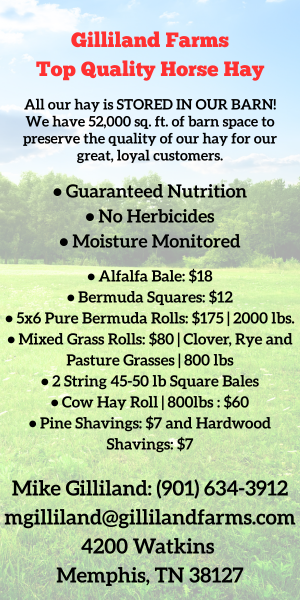Imagine being an Olympic athlete who just won a silver medal. Now imagine being immediately told your new career is in an office. The shift from going 90 miles-per-hour to driving in a school zone can lead to a cascade of physical events. Thoughtful feeding can successfully ease the recently retired racehorse into a farm lifestyle.
Knowing how a racehorse is managed during its racing career is helpful in guiding the horse into its next career. Most high performance equine athletes are fed a calorie dense diet spread out over four to five grain feedings a day. It’s not uncommon for these horses to get 50% of their diet from grain. Whenever possible, find out exactly what type and how much grain, supplements, pharmaceuticals, and hay were fed to the horse while at the track or in training. As with all horses, feed changes should be made over seven to 10 days to allow gut microbes to shift accordingly. Free choice hay will benefit not only the horse’s digestive tract, but also keep him mentally happy as he transitions to a slower lifestyle.
The biggest shift in diet for the horse coming off the track is the change from a heavily grain based diet to a hay based diet. High quality, free choice hay is essential as the racehorse transitions to a different career. Because horses are designed to be continuous grazers, free choice hay keeps their gut happy. Consider a hay with higher levels of protein if the horse lacks a full topline. Remember to always provide plentiful, clean water as well. Horses eating a dry diet will consume more water than those on pasture.
Gastric ulcers are a known problem for horses in high levels of competition or stress. A veterinary exam can determine whether treatment is needed for the retired race horse. The vet may also suggest specific feeding strategies to assist healing the horse’s stomach. A healthy gut makes for a healthy horse.
Race horses typically have a body condition score of 4-5 out of 10; most will move to a 5-6 for their retirement career. Many horses right off the track are younger so they are still filling-out as they finish growing. Whereas sugar from grain was a primary calorie source at the track, shifting to fat as a calorie source is a safe, efficient way to increase the horse’s body condition score while avoiding the pitfalls of a high sugar diet. Added protein through a ration balancer, higher protein feed, or amino acid supplement can help the horse develop a fuller topline. While it may not take long for the horse to put on weight, the topline will take months of proper nutrition and exercise to fully develop. Slow, steady progress should be the goal as the horse moves from being a racehorse into his or her next career.
Most ex-racehorses enjoy the slower pace of farm life and make the transition well. Careful feeding can ease them through this change of lifestyle, while consultation with your veterinarian and nutritionist will ensure a successful post-racing life for your athlete.









